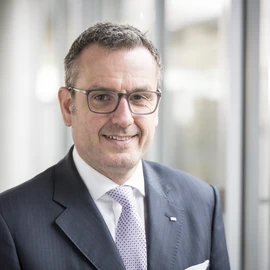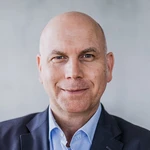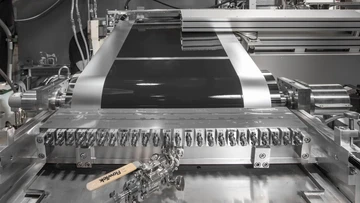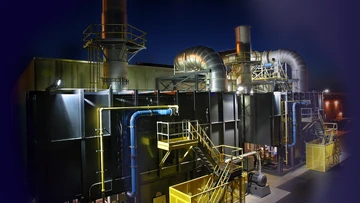It is not just the established industrial nations that limit emissions. In view of growing environmental problems, emerging countries, too, are placing more and more emphasis on cleaner production processes. As a result, investment in environmental technologies is increasing – and this has an effect on the Dürr Group’s figures: In 2018 the environmental technology division, Clean Technology Systems, recorded the Group’s highest growth rates, with organic order growth of 28.6 %. Including the MEGTEC/Universal Group, which has been part of the Dürr Group since October, the increase was as much as 56.6 %. The emerging countries accounted for 44 % of demand for environmental technologies, with 28 % of orders coming from China.
Expanding world market leadership through the acquisition of MEGTEC/Universal
Through MEGTEC/Universal (2018: around € 200 million of sales, 865 employees) the Dürr Group has expanded its world market leadership. The acquisition of the US environmental technology specialist will double sales in exhaust-air purification technology to a good € 400 million and strengthens Dürr’s competitive edge. The aim is to implement synergies and cost benefits in production, purchasing and sales. Ralf W. Dieter, CEO of Dürr AG, states: “Our customers benefit from a dense service network. Furthermore, Dürr is the only supplier offering all standard exhaust-air purification technologies from a single source.”
The acquisition of MEGTEC/Universal is accelerating the Dürr Group’s growth in environmental technology. In 2019, sales are anticipated to increase to as much as € 450 million; the EBIT margin should reach a level of 2 to 3 %, despite integration costs and purchase price allocation effects. By 2021 sales are set to increase to as much as € 500 million with an EBIT margin of between 6 and 7 %.
Being close to customers worldwide
“With MEGTEC/Universal we are continuing to expand our international reach. As a global player in environmental technology, we are close to customers wherever they are, and offer reliable project execution in any market”, says Dr. Jochen Weyrauch, responsible for Clean Technology Systems on the Dürr AG Board of Management. Access to customers is improving, particularly in North America.
The range of buyers is also increasing. In the past, exhaust-air purification technology was mainly supplied to the automotive, pharmaceutical, chemical, food and printing industries. Now, customers also come from the metal, mining and timber industries, among others. In addition, Dürr is expanding its environmental technology range. Aside from technologies for exhaust-air purification, MEGTEC/Universal also offers industrial dryers, coating systems for lithium-ion-battery electrodes, and noise abatement systems.
The Dürr Group acquired MEGTEC/Universal for € 104 million from US plant engineering firm Babcock & Wilcox. At the end of 2018, the environmental technology division, Clean Technology Systems, had almost 1,500 employees, around 560 of whom were based in the United States and 320 in Germany. The business is managed from Bietigheim-Bissingen. MEGTEC/Universal’s main sites are De Pere and Stoughton in the US State of Wisconsin. The division is represented worldwide through 25 sites in 13 countries.
How does exhaust-air purification technology work?
Industrial exhaust-air purification systems mainly render organic hydrocarbon compounds harmless. These are released, for example, during the processing of solvents contained in paints and lacquers. Substances with unpleasant odors (for instance mercaptans) are also treated using exhaust-air purification systems, as is exhaust air from the chemical industry that contains substances such as chlorine, bromine, fluoride, sulfur and nitrogen. Carcinogenic formaldehydes, too, are removed from exhaust-air using Dürr technology.
The most common procedure for exhaust-air purification is thermal oxidation, whereby harmful hydrocarbons are heated to as much as 1,000 degrees Celsius. This causes them to combine with oxygen and transform into non-harmful substances. To lower energy consumption, Dürr equips its thermal systems with heat recovery units. In catalytic exhaust-air purification, contaminants are burnt, albeit at low temperatures. Other commonly used methods are sorptive and separation processes, whereby gaseous substances and solid matter such as dust are removed the exhaust air.










